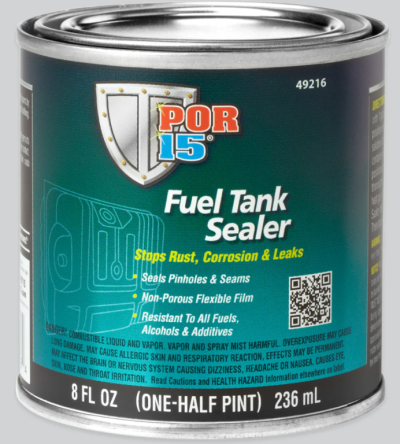I just got my fuel tank delivered from summit. The original along with the bottom of my 300 were under coated. Should I apply any kind of sealer, protector or just leave bare metal? I have seen both ways. Any thoughts on this matter? I dont know if Texas heat will make any difference or not.
The original Chrysler product car fuel tanks were terne plated. Some current suppliers, such as Spectra Premium, use nickel terne plating. The original terne plate was lead/tin based. These do not require painting, but it doesn't hurt and will extend the life of the terne plate. Other suppliers use zinc coat, stainless steel, or painted.
I use Spectra Premium tanks where available. I paint all my tanks using the same catalyzed acrylic enamel paint I use for painting cars. The terne tanks have oil on them from the manufacturing process, so degreasing is necessary. I also keep and re-use the original asphalt/felt pads that go between the tank and trunk floor. These are superior to the material in reproduction pads for moisture control. I've saved a few extras from parted out cars in case needed.
I don't care for the look of shiny metal tanks under the cars, so I use black, which matches the black paint or undercoat I use in other areas under the cars.
This is a fresh install in my Challenger:
This one in my GTX has been in for several years, although a lot is hidden behind the trunk well, and it is a bit dirty, in this picture. The missing trunk floor plug seen in this picture has been reinstalled:
For tanks that are not available that are corroded inside like the one in your picture, I do the following:
- Remove the fuel sender and any other removable items from the tank.
- Flush with water to remove any gas.
- Add hydrochloric acid (muriatic acid) with steel balls and cap the tank openings.
- Agitate the tank with the steel balls to break loose any rust that will break loose.
- Rinse with water and repeat the process with basic Tide powdered detergent.
- Rinse again with water.
- Rinse once more with lacquer thinner.
- Drain and dry with air.
- Treat with POR-15 Cleaner/Degreaser and dry.
- Etch with POR-15 Metal Prep.
- Rinse again with water.
- Drain and dry with air and/or allow it to sit in the sun.
- Take measures to prevent blocking any built in vent tubes or other items such as rollover valves.
- Add this sealer and cap the tank.
- Rotate, twist, and turn the tank to spread the sealer.
- Allow it to cure according to instructions, but remove the caps before the cure is complete.

I've used this in my 1979 Newport and 1971 D100 successfully.

















